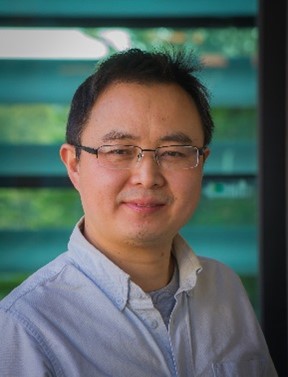Tutorials

Abdallah-Shami
Title: AutoML for Adaptive Intrusion Detection in 6G and IoT Systems
Abstract: This tutorial explores how Automated Machine Learning (AutoML) can enhance cybersecurity in next-generation 6G networks and Internet of Things (IoT) systems, with a focus on Intrusion Detection Systems (IDS). As 6G and IoT technologies evolve, they introduce increasingly complex and dynamic security challenges. This tutorial addresses these issues by showcasing how AutoML provides scalable, adaptive solutions.
It begins with an overview of cybersecurity in 6G and IoT environments, emphasizing the growing need for intelligent IDS to counter sophisticated cyber threats. Traditional machine learning models require significant manual effort and face limitations in addressing evolving threats and model drift. AutoML automates key processes—such as data preprocessing, feature selection, model optimization, and continual updating—enabling IDS that can adapt to evolving attack patterns and maintain effectiveness over time.
A case study using public cybersecurity datasets will be presented to illustrate the real-world application of AutoML in IDS development.
The tutorial is based on work published by the OC2 group and is available open-source through the group’s GitHub repositories: https://github.com/Western-OC2-Lab/. The following publications form the foundation of the tutorial content and are available as open access or through the arXiv repository:
- Yang, S. Naser, A. Shami, S. Muhaidat, L. Ong, and M. Debbah, “Towards Zero Touch Networks: Cross-Layer Automated Security Solutions for 6G Wireless Networks,” IEEE Transactions on Communications, doi: 10.1109/TCOMM.2025.3547764. [Invited Paper]
- M. Manias, A. Chouman, and A. Shami, “Model Drift in Dynamic Networks,” IEEE Communications Magazine, vol. 61, no. 10, pp. 78–84, Oct. 2023, doi: 10.1109/MCOM.003.2200306.
- Yang and A. Shami, “Towards Autonomous Cybersecurity: An Intelligent AutoML Framework for Autonomous Intrusion Detection,” International Workshop on Autonomous Cybersecurity (AutonomousCyber 2024), held in conjunction with the 31st ACM Conference on Computer and Communications Security (ACM CCS 2024). [Best Paper Award]
- Yang, M. E. Rajab, A. Shami, and S. Muhaidat, “Enabling AutoML for Zero-Touch Network Security: Use-Case Driven Analysis,” IEEE Transactions on Network and Service Management, vol. 21, no. 3, pp. 3555–3582, June 2024, doi: 10.1109/TNSM.2024.3376631.
- Yang and A. Shami, “A Multi-Stage Automated Online Network Data Stream Analytics Framework for IIoT Systems,” IEEE Transactions on Industrial Informatics, vol. 19, no. 2, pp. 2107–2116, Feb. 2023, doi: 10.1109/TII.2022.3212003.
- Yang and A. Shami, “IoT Data Analytics in Dynamic Environments: From an Automated Machine Learning Perspective,” Engineering Applications of Artificial Intelligence, vol. 116, pp. 1–33, Nov. 2022.
- Yang and A. Shami, “IDS-ML: An Open-Source Code Repository for Intrusion Detection System Development Using Machine Learning,” Software Impacts, vol. 14, Nov. 2022.

Shui Yu

Zhiyi Tian
Title: AI for Semantic Communications
Abstract: Artificial intelligence has become the powerful engine behind the dramatic progress of communications, such as, 6G and semantic communications. However, the deployment of AI in communication faces many fundamental challenges, especially in theory. In this tutorial, we focus on the potential of leveraging mathematical tools to guide the application of AI methods in the field of communications. Specifically, we introduce the basics of two related emerging fields, differential geometry in deep learning and semantic communication. We firstly present the current status of the two fields and explain why they are critical for future communications. Secondly, in order to understand differential geometry in deep learning, we introduce the necessary basic concepts of differential geometry, including topology, manifold, tensor, vector space, dual vector space, metric, geodesic, and so on. Thirdly, we highlight the related latest research on differential geometry in deep learning. Fourthly, we will analyze the current research status of semantic communications, and the application of differential geometry for the research area. Finally, we discuss the promising research directions in the fields.
Shui Yu (Fellow, IEEE) is Professor of the School of Computer Science in the Faculty of Engineering and Information Technology at UTS, the Deputy Chair of the UTS Research Committee, and is a researcher of cybersecurity, privacy and the networking, communication aspects of Big Data, and applied mathematics for computer science.
He has researched security issues associated with smart grids, which present opportunities to help solve the problems of carbon emissions and the energy crisis.
He has also investigated creating anonymous transactions on Blockchain to deal with threats to users’ privacy. His anonymous communication work for web browsing privacy has been cited by more than 200 US patents.
He has published two monographs and edited two books, and produced more than 500 technical papers, published in top journals such as IEEE TPDS, TC, TIFS, TMC, TKDE, TETC, ToN, and INFOCOM. His h-index is 81.
Shui serves his research communities in various roles, including serving on the editorial boards of IEEE Communications Surveys and Tutorials, IEEE Communications Magazine and the IEEE Internet of Things Journal, among others.
He has been a member of organizing committees for many international conferences, such as the publication chair for IEEE Globecom 2015, IEEE INFOCOM 2016 and 2017, TPC chair for IEEE Big Data Service 2015, and general chair for ACSW 2017.
He served as a Distinguished Lecturer of IEEE Communications Society (2018-2021). He is a Distinguished Visitor of IEEE Computer Society (2022-2024), a voting member of IEEE ComSoc Educational Services board, and an elected member of Board of Governors of IEEE Communications Society and IEEE Vehicular Technology Society, respectively. He is a Fellow of IEEE.
Zhiyi Tian (Member, IEEE) is currently a postdoctoral researcher with the Faculty of Engineering and Information Technology, University of Technology Sydney, Australia.
Zhiyi has published more than 20 technical papers in top journals such as IEEE TDSC, TIFS, CSUR. His h-index is 10.
Zhiyi serves his research communities as reviewer for many journals, including IEEE Communications Surveys and Tutorials, IEEE TIFS, IEEE TKDD, IEEE Network Magazine and the IEEE Internet of Things Journal, among others.
His research interests include AI application in communications, 5G/6G technologies, communications security and privacy, security and privacy issues in deep learning, and semantic communications.
Co-Sponsored

DRCN 2025
Innovation
contact us
drcn2025@gmail.com
No.818 Fenghua Road, Ningbo, Zhejiang, China 315211